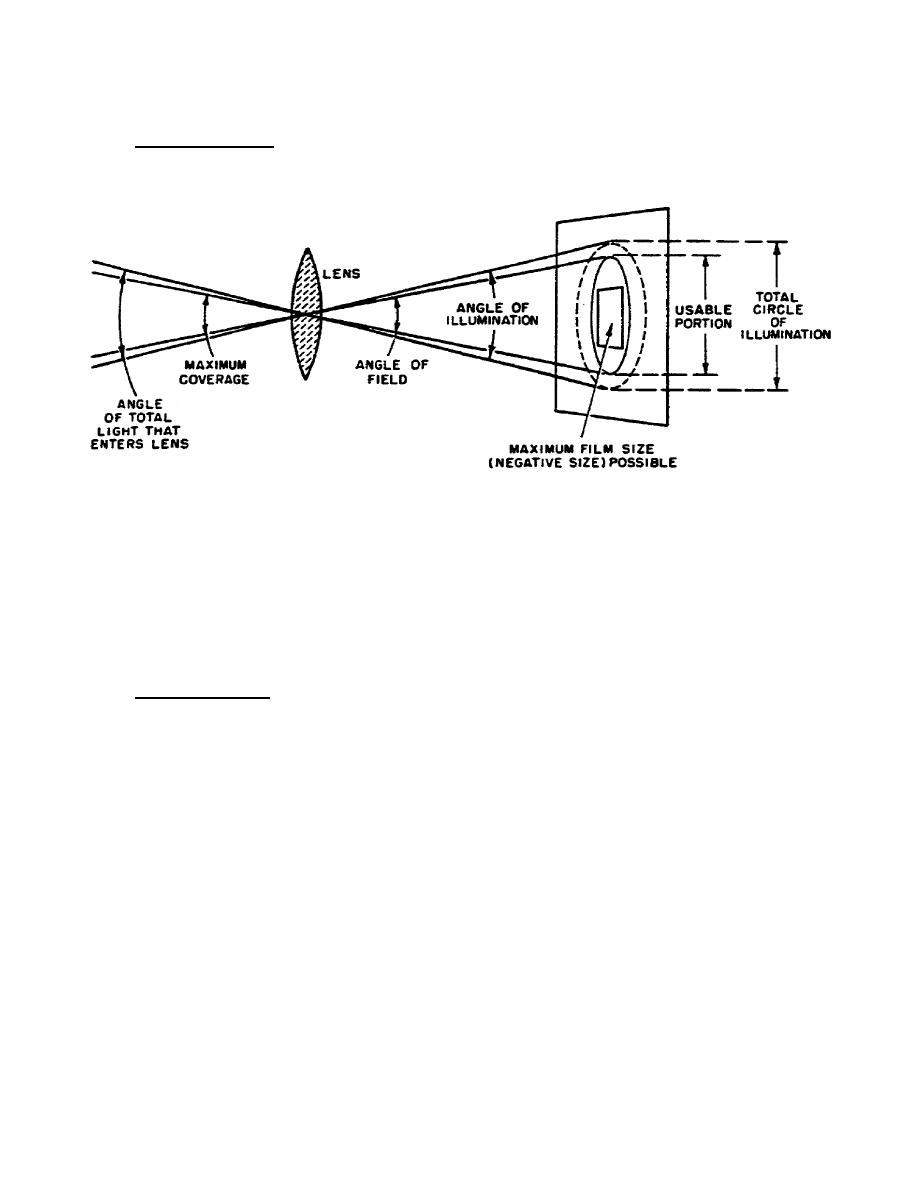
When an object is near a divergent lens, the point of principal focus, the
frontal plane, and other focal points are located in front of the lens.
2-9. ANGLE OF FIELD.
The angle of field is the widest angle at which light
entering a lens will produce, at its focal plane, a circle of good definition.
This is the usable portion of the circle of illumination, (fig 2-14).
Figure 2-14.
Angle of field.
a. A normal (standard) lens has, approximately, the same angle of field
as the human eye (about 450 to 550); a wide-angle lens has a wider angle of
field; and long focal length and telephoto lenses have a narrower angle of
field.
b. The angle of field has a definite affect on the size of the negative
that can be used with a given lens, since any part of the film extending beyond
the circle of good definition will yield an indistinct image.
2-10. ANGLE OF VIEW.
The angle of view of a photographic lens determines
actual coverage when used with a camera of a particular film (negative) size,
(fig 2-15).
The angle of view of a lens is determined at the time of
manufacture.
94



 Previous Page
Previous Page
